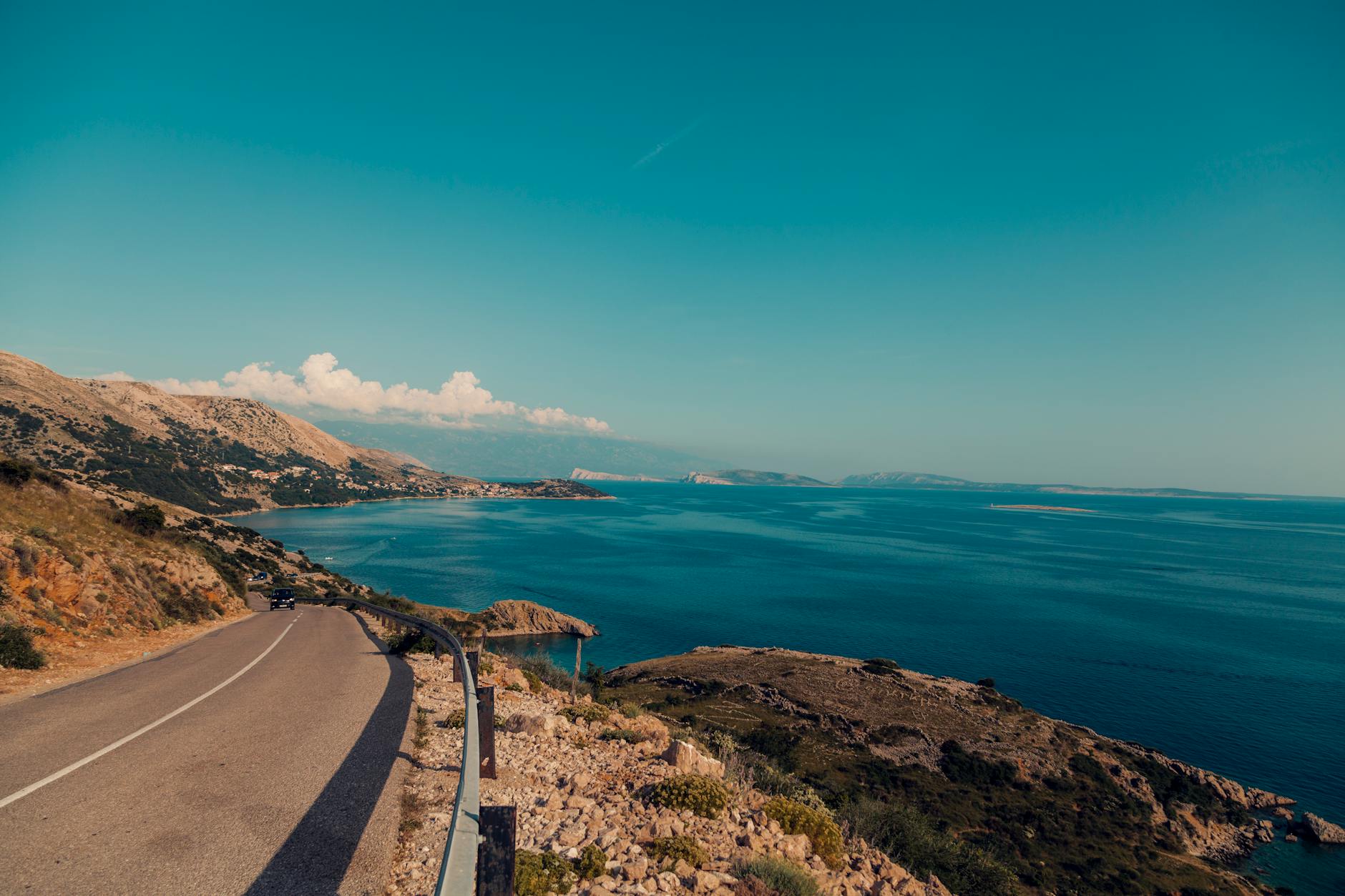Are You Using the Right Sunscreen for Australia’s Marine Life?

Impact of Sunscreens on Marine Life
As an outdoor adventure guide, I've been lucky to explore some of the most breathtaking spots across Australia, from the lush vistas of the Royal Botanic Gardens in Melbourne to the rich marine biodiversity of coastal areas. However, my passion for these natural wonders comes with a responsibility to protect them. One area of concern that often pops up in my eco-tours is sunscreen. While we all understand its importance in protecting our skin, it's crucial to recognise the impact traditional sunscreens have on marine life.
Many commercial sunscreens contain chemicals that are not only absorbed into our skin but also wash off into the ocean during swimming or sunbathing. These chemicals, such as oxybenzone and octinoxate, have a profound effect on coral reefs, contributing to bleaching and inhibiting growth during larval stages. It's alarming to witness vibrant coral ecosystems affected, ultimately threatening the marine species that rely on them for habitat and food.
To mitigate these impacts, I've steered my tours towards endorsing natural sunscreen options. These utilise ingredients like zinc oxide and titanium dioxide, which are non-nano and reef-safe. My aim is to educate my clients and encourage a shift towards products that safeguard both our skin and the natural environments we cherish. Through informed choices and small adjustments, we can all play a part in preserving the beauty and health of our marine ecosystems.
Identifying Harmful Sunscreen Ingredients
Ingredients to Avoid
During my adventures through Australia's stunning landscapes, I've realised how crucial it is to use products that protect not only our skin but also our planet. When it comes to sunscreens, avoiding ingredients like oxybenzone and octinoxate is vital. These chemicals, often found in conventional sunscreens, pose serious threats to coral reefs and marine life. I recall my visit to the vibrant laneways of Hosier Lane, where I shared tips on eco-conscious travel with fellow adventurers. It felt empowering to discuss how choosing the right sunscreen contributes to preserving our natural world.
Understanding Labels
Mastering the art of deciphering sunscreen labels is essential for every eco-conscious traveller. Seek out terms like "reef-safe" or "biodegradable," and scrutinise ingredient lists for harmful substances. I’ve found that mineral-based sunscreens, particularly those containing zinc oxide or titanium dioxide, are less damaging to ecosystems. When I receive questions on tours about baby sunscreen best for delicate skin, I usually recommend mineral-based options as they offer a safe alternative without compromising environmental integrity.
Potential Environmental Hazards
Sunscreen ingredients can have profound environmental implications. Harmful chemicals can wash off into oceans, affecting marine habitats and biodiversity. Exploring these challenges has fostered a deeper appreciation for sustainable choices. By aligning our skincare products with nature, we help reduce our ecological footprint, ensuring experiences remain unspoiled for future generations. As an advocate for eco-friendly practices, I’m committed to spreading awareness and hope my reflections inspire fellow adventurers of Queen Victoria Market to embrace sustainable sunscreen solutions.
Choosing Eco-Friendly Sunscreens
Key Eco-Friendly Ingredients
When selecting the ideal eco-friendly sunscreen, I always pay attention to ingredients that protect both my skin and the environment. Mineral-based options are often the go-to, using zinc oxide or titanium dioxide for broad-spectrum coverage. These ingredients are notably gentler on marine ecosystems and avoid harmful chemicals like oxybenzone and octinoxate, which can damage coral reefs. Additionally, natural oils like coconut or jojoba not only provide hydration but also enhance environmental sustainability.
Recommended Sunscreen Types
For those like me who are passionate about safeguarding our natural treasures, opting for reef safe sunscreen is essential. Formulations like these contribute significantly to preserving marine life while meeting personal protection needs. Stick with mineral sunscreens, as they lack harmful chemicals often found in conventional options. When I'm exploring the eco-friendly markets at Queen Victoria Market, I make a point of scanning the labels for biodegradable and organic certifications, adding a layer of reassurance to my choices.
Application and Effectiveness
Eco-conscious travelers will find that the right application ensures maximum protection against the harsh Australian sun without compromising their ecological footprint. Start by reapplying sunscreen every two hours and generously covering all exposed skin. Since mineral sunscreens can be thicker, it's crucial to rub them in thoroughly. This practice not only fortifies against UV exposure but also aligns with a sustainable ethos, harmonizing protection with planet preservation.
Incorporating Sunscreen in Eco-Tours
Educating Tourists
As I lead adventurous souls through Australia's stunning landscapes, there's always time to chat about the importance of using eco-friendly products like zinc sunscreen. These conversations not only highlight the beauty around us but also educate on the essential role such products play in preserving the ecosystems we cherish. Sharing anecdotes from experiences in the field, I find tourists become more invested in their impact, eager to contribute to preservation efforts.
Providing Eco-Friendly Options
While exploring trails and beaches, I offer eco-conscious sunscreens to my tour groups. These products are carefully selected, ensuring they are safe for our bodies and surroundings. Visitors are often surprised by how readily available and effective natural alternatives are when I share samples and my own recommendations. By personally endorsing these options, the commitment to safeguarding the environment becomes more relatable and practical for explorer enthusiasts.
Demonstrating Proper Use
Practical demonstrations during tours help tourists understand exactly how to apply eco-friendly sunscreens for maximum effect without causing harm to the environment. From effectively spreading zinc-based sunscreen to ensuring they follow reapplication guidelines after swimming or sweating, these small yet pivotal actions are ingrained into each adventure.
By witnessing first-hand how easy and impactful these choices are, the tourists are equipped to continue these practices beyond their time with me, fostering a sense of responsibility and stewardship for the natural world.
Avoiding Common Sunscreen Pitfalls
Ineffective Ingredients
It's amazing how exploring the vibrant laneways of Hosier Lane, with its creative graffiti and art, serves as a reminder of diverse beauty—and not all sunscreens are created equal. Some contain ineffective sunscreen compositions that offer little protection from UV rays. Always look for broad-spectrum options that protect against both UVA and UVB rays and ensure they are SPF 30 or higher for adequate defense, especially when you're strolling nearby the lush expanses of the Royal Botanic Gardens.
Misuse that Harms Ecosystems
During my travels, I've noticed how small actions make a big difference in preserving our natural wonders. When I swapped to eco-friendly sunscreen on hikes and visits to local beaches, it was a step toward protecting our reefs and aquatic life. Avoid slathering on sunscreen just before diving into the ocean. Instead, apply it 15 minutes prior to give your skin time to absorb it properly. This minimizes residue left in the water where it can harm delicate marine environments.
Dispelling Myths about Natural Sunscreens
While strolling through the eco-friendly markets at Queen Victoria Market, I overheard a common myth—some believe that all-natural sunscreens don't work. This isn't true. Mineral-based options with zinc oxide sunscreen or titanium dioxide can offer effective sun protection. Choose products labeled “reef-safe” to ensure you're investing in natural sunscreen for face and body that genuinely protect without compromising the beautiful marine life we all cherish.


